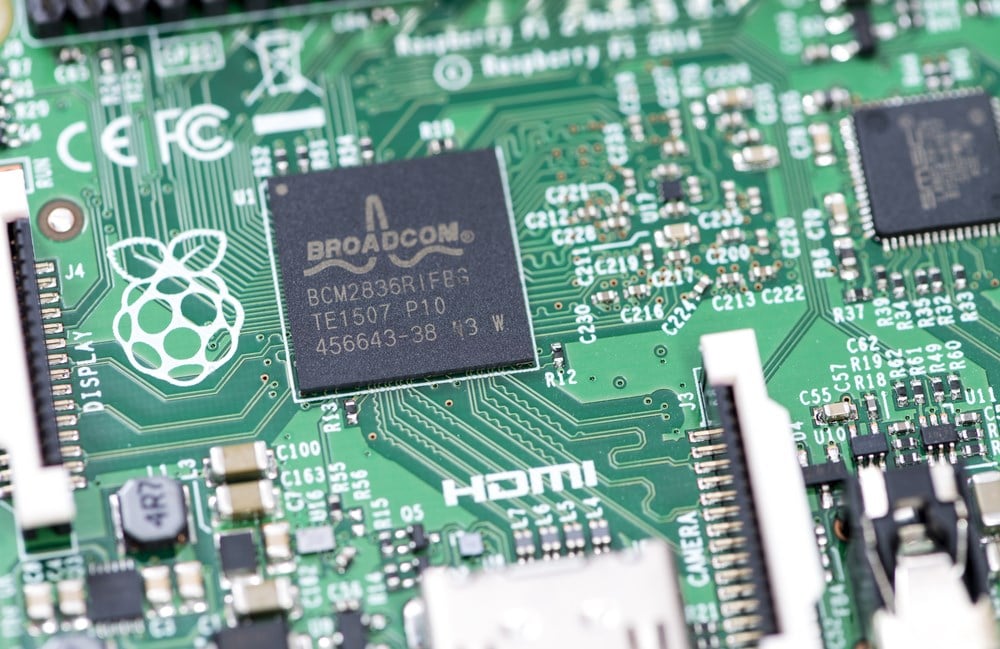Challenges Hit Broadcom Stock, But Analysts See EPS Growth

Chipmaker Broadcom Inc. (NASDAQ: AVGO) rode the AI wave in tandem with industry peer Nvidia Corp. (NASDAQ: NVDA), advancing 51% year-to-date.
But recently, the stock has been slumping, also in unison with Nvidia.
Sure, Nvidia is the bigger price gainer, advancing 189.11% year-to-date, but Broadcom has a feature that Nvidia doesn’t: A dividend.
Despite the meteoric rise of AI-related stocks, including Broadcom, and especially Nvidia, growth stocks like these typically plow earnings back into projects with high revenue potential, such as AI chips.
But some chip designers, including fellow large-cap Qualcomm Inc. (NASDAQ: QCOM), do return a portion of earnings to shareholders via a dividend.
Dividends Attract and Retain Investors
Dividends are a way of attracting investment and can incentivize shareholders to stick around even during downturns, as the dividend partially offsets price declines.
MarketBeat’s Broadcom dividend data shows a yield of 2.28% and a 13-year track record of boosting the shareholder payout.
For example, Broadcom declined 16% in 2022, while Nvidia fell by 50%. There are various reasons for that divergence, but the Broadcom dividend accounts for some of it.
San Jose, California-based Broadcom is primarily involved in the design and development of semiconductor chips, rather than being a chip manufacturer.
The company designs a wide range of semiconductors, including chips for networking, wireless, broadband and other applications. The actual manufacturing of these chips is typically outsourced to semiconductor foundries or manufacturing partners.
One of those foundries, Taiwan Semiconductor Manufacturing Company Ltd. (NYSE: TSM), contributed to Broadcom’s decline for the week ended September 15. TSM said it was delaying deliveries to a chip manufacturing facility that’s under construction in Arizona. The company said concerns about demand were behind the delays, and it was a cost-cutting move.
Chip Index Also Skidded
Naturally, that sent fear throughout the chip industry. The iShares Semiconductor ETF (NASDAQ: SOXX) skidded 2.89% on September 15, the day the TSM news broke.
Other news has been hitting Broadcom in recent days.
Broadcom shares gapped down 2.47% at the open on September 21, after a tech-focused media outlet reported that Alphabet Inc. (NASDAQ: GOOGL) was considering dropping Broadcom as its AI chip supplier as early as 2027. The report stated that Alphabet’s Google could design its own AI chips, potentially saving billions.
Google reaffirmed its partnership with Broadcom after the news broke. Broadcom shares rallied after Google’s statement, but didn’t close the gap, and finished the session down 2.67%.
Arm's Disappointing IPO Hurts Chip Stocks
In addition, the IPO of chip designer Arm Holdings plc (NASDAQ: ARM) has, after six sessions, been a disappointment. The stock traded below its IPO price of $51 on September 21, but closed at $52.16. Nonetheless, the stock has traded lower for five sessions in a row, and as of the September 21 close, was down 14.14% for the week.
Arm’s sub-par price performance had a ripple effect on chip investors. The SOXX ETF gapped down 1.85% on September 21. Keep in mind: Because an ETF tracks a basket of stocks, it has inherent diversification, which can mitigate downside volatility.
But when Broadcom is the second-largest holding in an ETF and its underlying index, with a weighting of 8.04%, that’s going to have a big influence on index performance.
Fined By South Korean Regulators
One more factor dented Broadcom’s performance on September 21: South Korea’s antitrust regulator slapped the company with a $14.2 million fine, citing unfair business practices against Samsung. The country’s Fair Trade Commission said Broadcom pushed a long-term supply deal that worked to Samsung’s disadvantage.
So does this mean it’s time to bail out of Broadcom?
In most cases, no.
Analysts see the company’s earnings remaining stable this year, and growing by 10% next year. In addition, that dividend payout is likely to keep shareholders on board, even in market or tech-sector slumps. The company’s 2022 performance, especially relative to Nvidia’s, is a good argument for that case.
More News
View More




Recent Quotes
View More
Quotes delayed at least 20 minutes.
By accessing this page, you agree to the Privacy Policy and Terms Of Service.